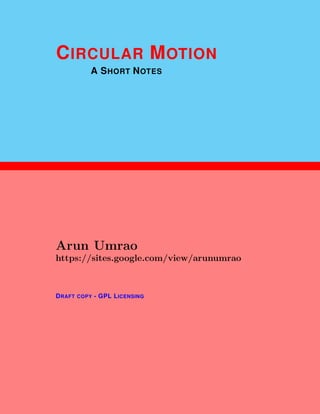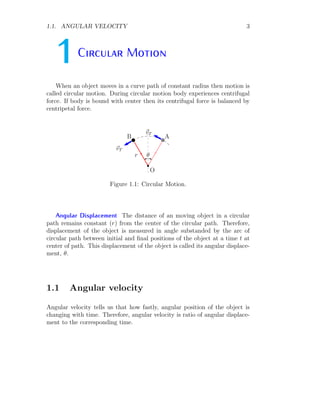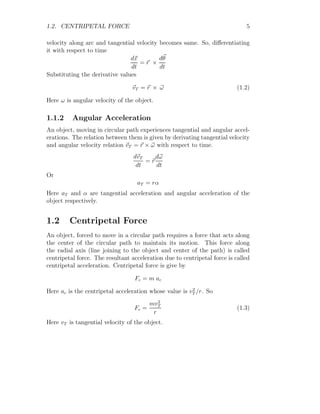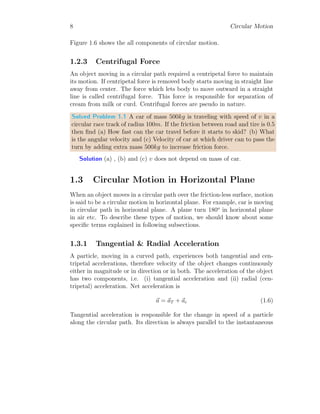The document discusses circular motion, including angular velocity, centripetal force, components of circular motion, and motion in horizontal and vertical planes. It defines key terms like angular displacement, angular velocity, tangential velocity, centripetal acceleration, and centrifugal force. Equations are provided for these quantities. Circular motion concepts are applied to examples like stability of vehicles on banked roads and vertical circular motion with a string.




























